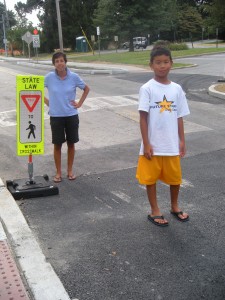Last night’s TESD Finance Committee Meeting was important. We learned through the following notes of Ray Clarke that the district is facing as much as an $8.5 million funding gap for 2011-12. Much discussion on how to prepare for this looming budget gap . . . imposing an Earned Income Tax, increase in property taxes, educational program and staffing cuts? The meeting last night was the precursor to next week’s independent, public discussion of Earned Income Tax, what is it, how would it work, who will it affect – there is much misinformation on the subject of EIT and looking forward to the presentation of October 18.
I agree with Ray, wouldn’t we all like to know how our state house candidates would suggest funding the school district’s looming muli-million dollar funding gap? My guess is that Paul Drucker and Warren Kampf will remain mum on the subject . . . viewing that any ‘discussion’ of imposing an Earned Income Tax, an increase property taxes or cutting of programs would be the kiss of death 3 weeks before Election Day!
Here are Ray’s notes from last night – thank you Ray!
Update from last night’s TESD Finance Committee Meeting:
My own selection of highlights.
Next year’s $7 million gap looms large (this year seems under control). Expenses are pretty much locked in: contracted salary increases and no option to save costs through program changes unless through staff attrition. Administration is revisiting the strategies from last year, of course. On the Revenue side, there are a couple of built-in threats:
- $1 million of investment earnings based on a 2% return when the current investments are earning less than 0.5%. Gap at least $0.5 million
- $2.7 million of transfer taxes based on the rolling average formula, but the estimate for this year is $1 million less than that.
So, how to fill a gap that may be as high as $8.5 million? The Act 1 property tax increase is set at 1.4% ($1.2 million), and exceptions if approved would be roughly $1.6 million – a total property tax increase (unless a higher one was approved by voters) of 3.2%. Still $4 million short of today’s base projected expenses.
Key questions:
- How much of the gap can be closed through another round of expense reductions? The administration believes that the well is running dry. A young teacher corps (no built in halving of salaries or program changes as older teachers retire), and items like supplies already cut back to 2008/9 levels.
- Is an EIT an alternative on the revenue side? Bring back to T/E the $4 million (my guess) being paid to other townships? Maybe link that with a cap on property taxes?
There are many questions about the EIT, of course. Hopefully next Monday’s meeting (at Conestoga HS) will help answer them. The Finance Committee (rightly in my opinion) is designing this as an information session – with presentations about the tax, the financial impacts and the process – NOT an advocacy session. The place for that will be the Board Meeting the following week when the decision is made on whether to give non-binding notice to the Townships of the intention to put an EIT on next year’s ballot. Hopefully the process at the meeting will allow for questions of data clarification, but not opinions.
So if the EIT does get all the way to the ballot, the choices would get complicated. (That is hopefully what the session will explain). For example, voters may have to approve/reject a property tax increase of say 8%, approve/reject an EIT of say 1%, or if neither then we’ll get a property tax increase of 3.2% and withdrawal from the Fund Balance. As I have stated here before, I’m an advocate of the EIT solution (after rigorous examination of expense options), for many reasons.
For those who believe that these choices represent too little say on what is actually spent to educate our children, it was suggested that our state representatives have an important role to play.
- Should a local district be able to adjust expenses to levels it can afford? How many state mandates are appropriate?
- How can the pension problem be resolved?
- Wouldn’t it be nice if Drucker and Kampf could debate these issues?

